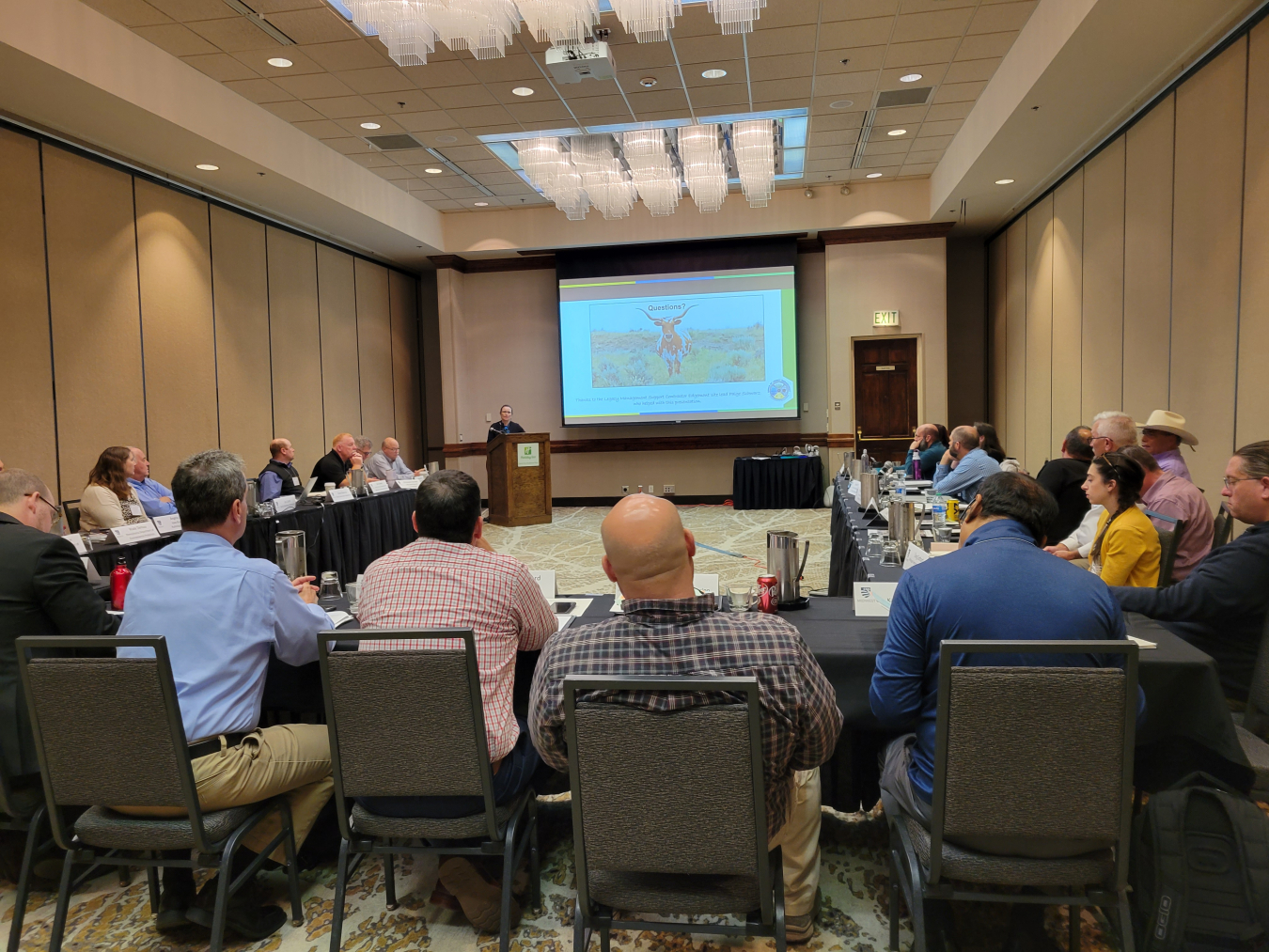Site manager discusses monitoring and maintaining the Edgemont, South Dakota, Disposal Site for long-term storage of radioactive materials.
January 5, 2023Last October, LM Site Manager Nicole Keller presented on the history of the disposal cell in Edgemont, South Dakota, to the Council of State Governments' (CSG) Midwestern Radioactive Materials Transportation Committee. It’s the first time LM has participated in the conference, which included staff from multiple program offices of the U.S. Department of Energy (DOE) and the U.S. Department of Transportation as well as tribal representatives and officials from 12 states.

LM Site Manager Nicole Keller presents on the history of the disposal cell in Edgemont, South Dakota, before the Council of State Governments (CSG) and Midwestern Radioactive Materials Transportation Committee (MRMTC).
Organized in 1989, CSG’s Midwestern Radioactive Materials Transportation Committee brings the Midwestern states together to identify, prioritize, and work with DOE to resolve regional issues related to the department’s transport of radioactive waste and materials, including spent nuclear fuel.
The council asked LM to present on the Edgemont Disposal Cell to showcase what a well-functioning disposal site looked like.
Keller’s presentation covered the processes and hard work that have taken place over the years as well as how the site is managed currently. She compared the remediation and closure process for Edgemont that took place in the 1980s to today’s standards and processes. She noted that the evolution of radioactive waste transportation and storage has been significant.
“Overall, this was a great opportunity to highlight the amount of work and planning that goes into these long-term disposal sites, and to showcase the Edgemont site specifically as a tangible example,” Keller said. “Because so much residual contamination remained in the vicinity of and at the Edgemont mill after operations ceased, DOE actively participated in the cleanup with the mill owner.”
DOE conducted radiological surveys at all vicinity properties and remediated those with mill-related contamination. These contaminated materials were placed in the disposal cell, which was constructed by mill owner Tennessee Valley Authority two miles south of the city of Edgemont. The site transitioned to DOE for long-term care in 1996.
LM’s objective at Edgemont is to ensure the protection to human health and the environment, while maintaining beneficial reuse. In partnership with the local community, LM preserves the grassland habitat through sustainable grazing. LM also manages the site for the national pollinator initiative and protects the soil surface, guarding against wind and water erosion.
Learn more about Edgemont.

